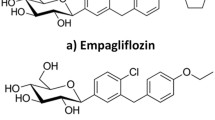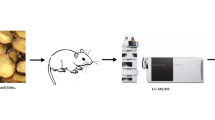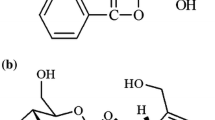Abstract
To support the rationale behind the development of the huperzine A patches and its pharmacological effects in clinical therapy, an LC–MS–MS method was developed and validated for determination of huperzine A in human plasma and then applied to the clinic pharmacokinetics study on transdermal patches of huperzine A. After a simple liquid–liquid extraction with ethyl acetate, analytes were separated on a C18 column with isocratic elution. The detection of analytes was performed on a tandem mass system equipped with an electrospray ionization source in positive mode using multiple-reaction monitoring. The MS–MS ion transitions monitored were m/z 243.2→210.1 for huperzine A and m/z 248.1→128.0 for tinidazole (internal standard). Method validation and sample analysis were performed according to FDA guidelines and the results met the acceptance criteria. The pharmacokinetic profiles of huperzine A following single transdermal administration of 8, 10 and 12 mg huperzine A to healthy human volunteers were depicted using the established method. The results showed that the pharmacokinetic behavior of huperzine A in vivo was present as linear dynamic characteristics with much longer T max, lower C max, and relatively constant plasma concentration. No gender difference and obvious adverse effects were observed from all three groups in our study. Our study indicated that the huperzine A transdermal patches could provide continuous drug delivery over 120 h with favorable tolerability. This may allow patients to obtain optimal plasma concentrations of drugs and to benefit from a longer duration of treatment.




Similar content being viewed by others
References
Kalaria RN, Maestre GE, Arizaga R, Friedland RP, Galasko D, Hall K, Luchsinger JA, Ogunniyi A, Perry EK, Potocnik F, Prince M, Stewart R, Wimo A, Zhang ZX, Antuono P (2008) Lancet Neurol 7:812–826
Imbimbo BP (2001) CNS Drugs 15:375–390
Cutler NR, Polinsky RJ, Sramek JJ, Enz A, Jhee SS, Mancione L, Hourani J, Zolnouni P (1998) Acta Neurol Scand 97:244–250
Cummings J, Lefevre G, Small G, Appel-Dingemanse S (2007) Neurology 69:S10–S13
Blesa R, Ballard C, Orgogozo JM, Lane R, Thomas SK (2007) Neurology 69:S23–S28
Chan AL, Chien YW, Jin Lin S (2008) Drugs Aging 25:761–775
Wang T, Tang XC (1998) Eur J Pharmacol 349:137–142
Zhao Q, Tang XC (2002) Eur J Pharmacol 455:101–107
Liang YQ, Tang XC (2004) Neurosci Lett 361:56–59
Zangara A (2003) Pharmacol Biochem Behav 75:675–686
Ma XC, Xin J, Wang HX, Zhang T, Tu ZH (2003) Acta Pharmacol Sin 24:247–250
Chu D, Liu W, Li Y, Li P, Gu J, Liu K (2006) Planta Med 72:552–555
Ye JC, Zeng S, Zheng GL, Chen GS (2008) Int J Pharm 356:187–192
Li YX, Jiang XH, Lan K, Wang L (2007) Biomed Chromatogr 21:15–20
Li W, Li J, Hu Q (2008) Biomed Chromatogr 22:354–360
US Department of Health and Human Services, Food and Drug Administration (2001) Guidance for industry, bioanalytical method
Li YX, Zhang RQ, Li CR, Jiang XH (2007) Eur J Drug Metab Pharmacokinet 32:183–187
Acknowledgments
This work was supported by Leading Talents of scientific research in TCM of Jiangsu Province (No. LJ200906).
Author information
Authors and Affiliations
Corresponding author
Rights and permissions
About this article
Cite this article
Wu, T., Li, CY., Chen, M. et al. Clinic Pharmacokinetic Profiles of Huperzine A Following Transdermal Administration to Healthy Human Volunteers. Chromatographia 74, 67–73 (2011). https://doi.org/10.1007/s10337-011-2037-z
Received:
Revised:
Accepted:
Published:
Issue Date:
DOI: https://doi.org/10.1007/s10337-011-2037-z




